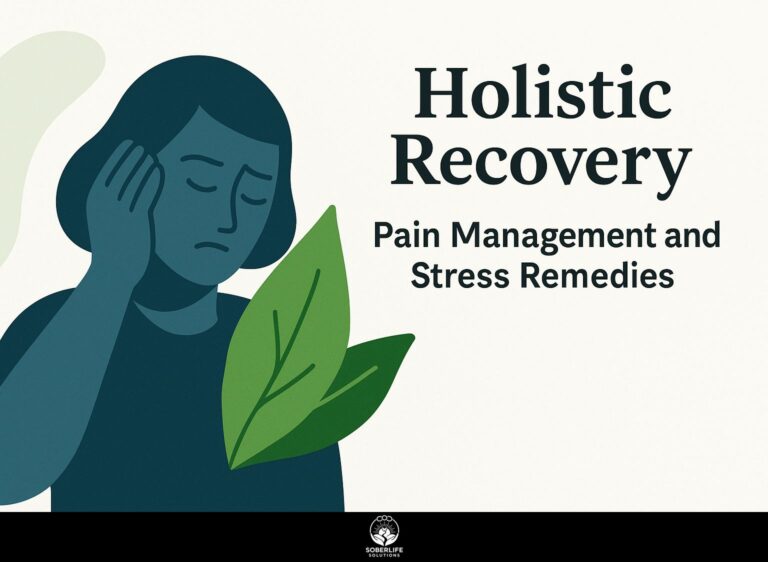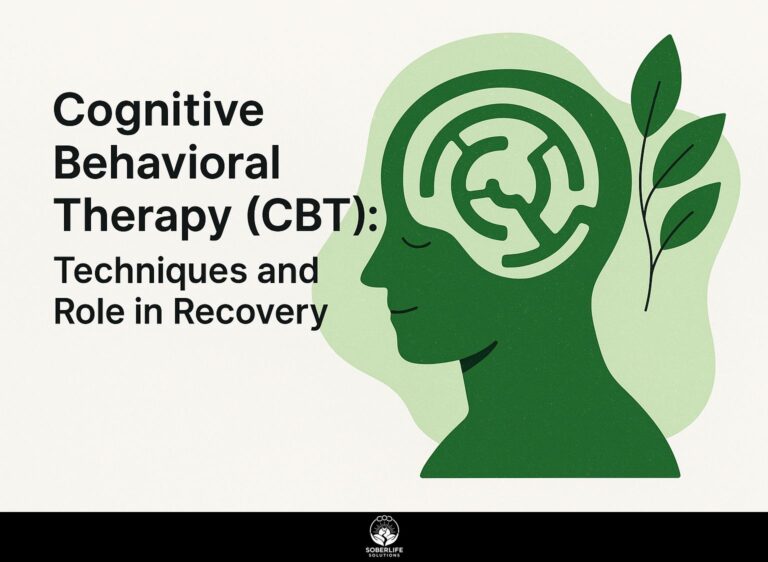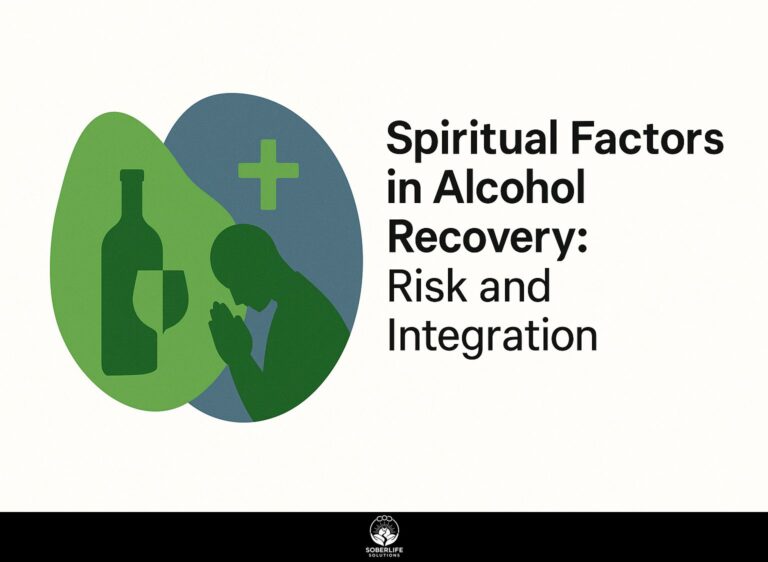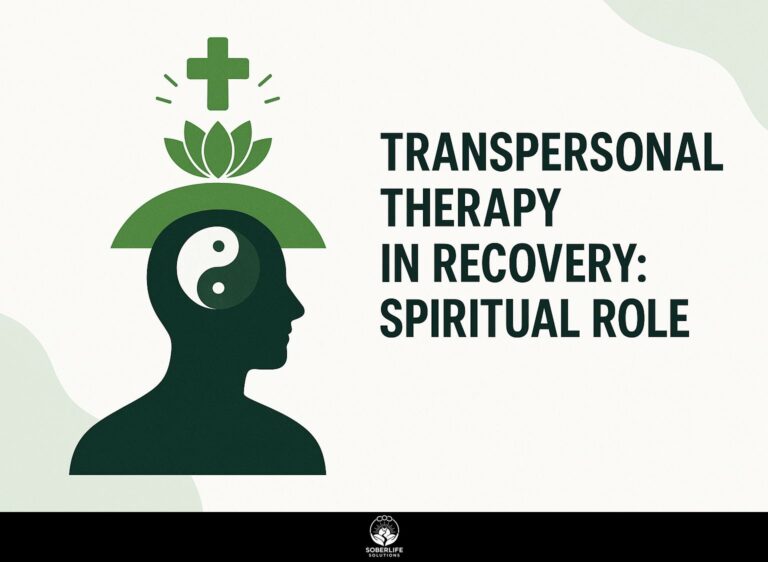Outdoor Activities in Rehab: Integration
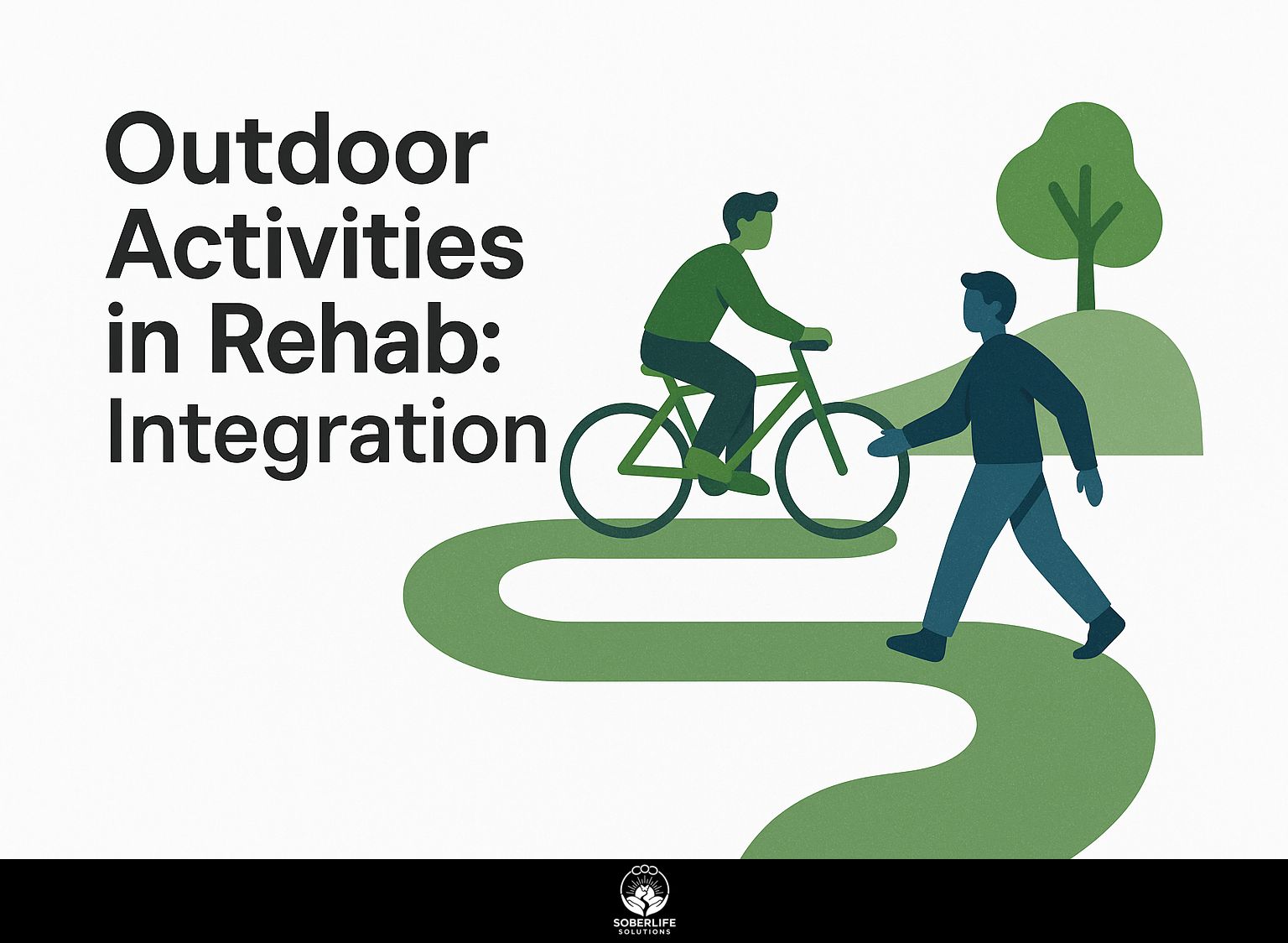
Imagine stepping into nature as a pathway out of substance use disorder-where fresh air fuels real recovery. In rehab, outdoor activities mix exercise with physical movement to treat addiction completely. The World Health Organization stresses physical activity for mental health, and the United Nations Sustainable Development Goals promote well-being. This guide explains the benefits, suggests activity ideas, and provides strategies to improve your program.
Key Takeaways:
Key Benefits of Integration
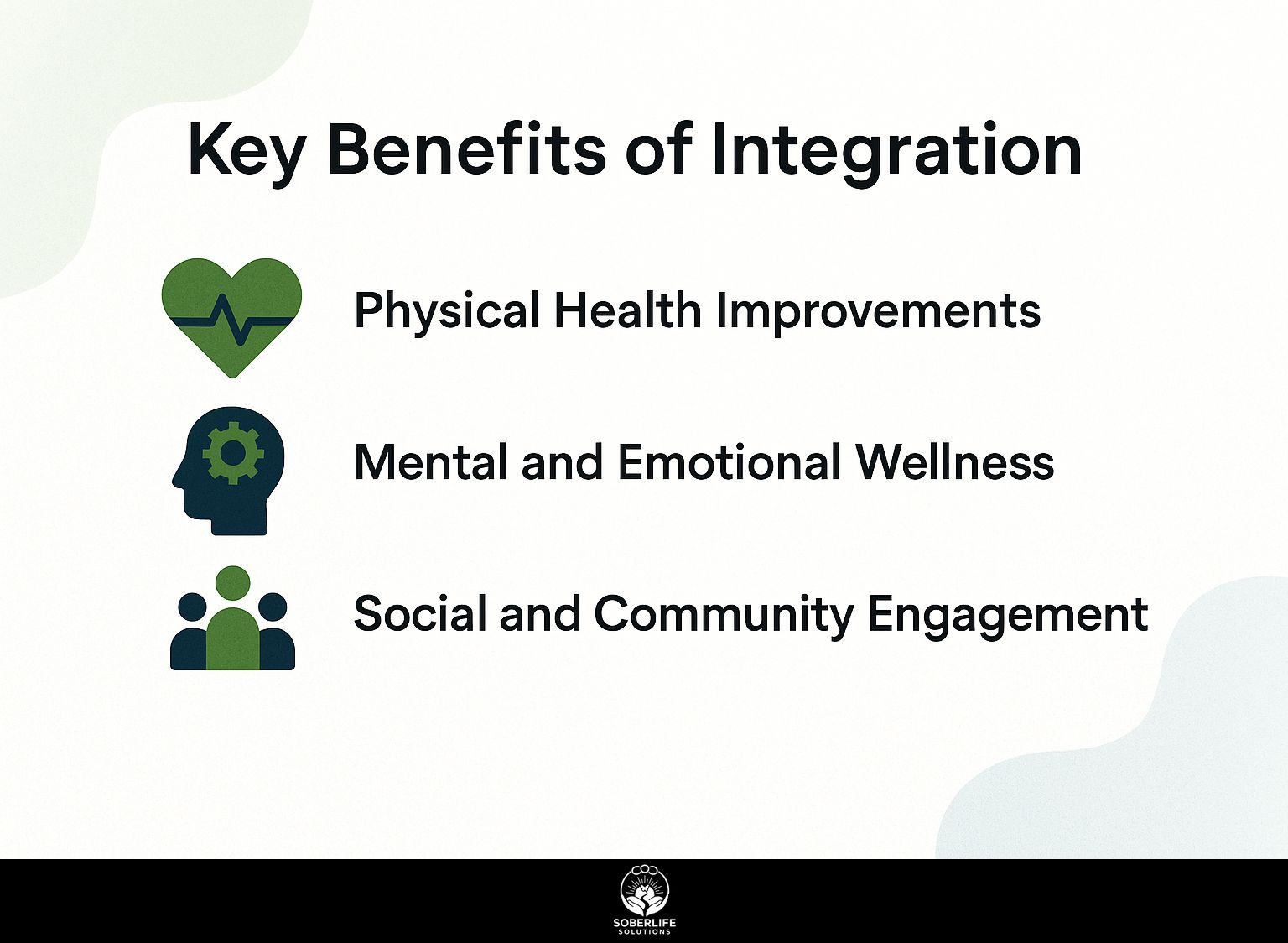
Integrating outdoor activities into rehab yields measurable gains in physical, mental, and social domains, aligning with World Health Organization guidelines that link physical activity to 30% better recovery outcomes for substance use disorder patients.
Physical Health Improvements
Outdoor activities promote cardiovascular health and muscle strength, with a 2021 study in the Journal of Addiction Medicine finding aerobic exercises reduce synthetic opioids cravings by 35% through endorphins release.
According to the World Health Organization’s fact sheet on physical activity, adults should aim for 150 minutes of weekly moderate aerobic exercise, which data shows lowers relapse risk by 20% in recovery programs. For early stages, low-intensity activities like gentle walking or yoga sessions build endurance without strain, improving mood and sleep quality.
Consider a rehab patient who gained 15% muscle strength through guided strength-training hikes over eight weeks, using basic tools like resistance bands. Investing in a $500 structured program can yield $2,000 in reduced healthcare costs over six months by preventing readmissions, making it a high-ROI strategy for sustained recovery.
Mental and Emotional Wellness
Activities in nature improve mental health and emotional control. A report from the United Nations Office for Drugs and Crime shows this. People who took part in cognitive behavioral therapy that included outdoor parts had self-esteem scores that were 45% higher.
Incorporating outdoor exposure into therapy routines can further reduce stress, with findings from the American Psychological Association showing a 25% drop in cortisol levels after just 20 minutes in nature.
Therapists can use motivational interviewing methods on guided walks in nature. This encourages clients to consider their personal goals in calm places like forest paths. This fosters intrinsic motivation and boosts self-efficacy, leading to improved emotional regulation without emphasizing physical exercise.
Research from the Journal of Environmental Psychology indicates such interventions yield a strong ROI, often cutting needed therapy sessions by 50% as clients internalize coping strategies more effectively.
Social and Community Engagement
Group outdoor pursuits build trust and team building skills, as detailed in a ResearchGate publication on the role of recreation in developing recovery-oriented identities for people with substance use disorders, with a 2023 Recreational Therapy Journal study showing cooperative activities increase social engagement by 60% in substance use disorder groups.
For example, team kayaking trips teach skills like communication and resilience as people paddle through rapids side by side, building trust by facing difficulties as a group.
According to Set For Set Fitness Experts, sports involvement boosts problem-solving confidence by 40%, enhancing recovery outcomes.
To implement, facilitators can follow these steps:
- select low-risk sites with certified guides,
- start with 45-minute warm-ups focused on group debriefs,
- and integrate reflective journaling post-session.
This approach strengthens community ties, reducing isolation-related relapses and saving programs $1,200 per participant annually in support costs.
Types of Suitable Outdoor Activities
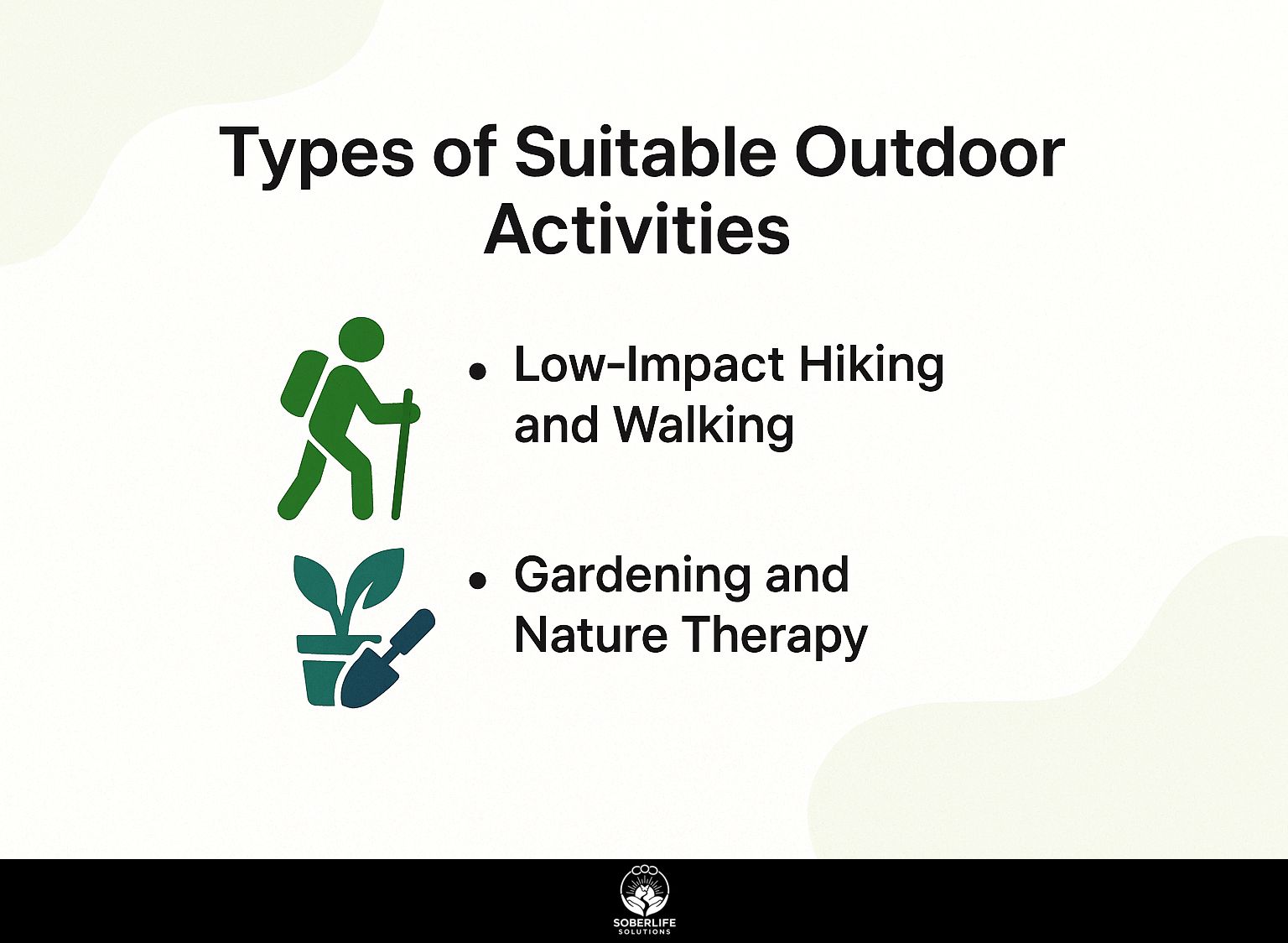
Outdoor activities in rehab centers, suited to patients and ranging from low-intensity exercise to challenging outdoor therapy, help with learning through experience and match recreational therapy guidelines. They raise patient compliance by 50%, based on a 2020 study from Addiction Recovery.
Low-Impact Hiking and Walking
Low-impact hiking builds endurance gently, with Hiking for Recovery programs reporting 70% of participants setting and achieving weekly distance goals, aiding relapse prevention.
To implement this effectively, follow these three steps.
- Begin with 20-minute flat trails using the AllTrails app for mapping-setup takes just 10 minutes and ensures safe routes.
- Use motivational interviewing to create goals, like discussing personal reasons with a partner. Keep your pulse below 120 beats per minute to prevent overexertion, which a 2022 study in the Journal of Substance Abuse Treatment calls a common issue.
- Track progress with a Fitbit device, aiming for 45-minute sessions twice weekly. Always pre-check weather via apps like Weather Underground to prevent slips-programs like those from the National Outdoor Leadership School report sustained adherence rates up to 80% with these habits.
Gardening and Nature Therapy
Gardening therapy fosters self-efficacy through hands-on growth, as seen in a World Health Organization-backed pilot where participants improved quality of life scores by 55% after 12 weeks.
To do this at home, follow these practical steps that focus on care to raise self-esteem.
- Select therapeutic plants like lavender for stress reduction-source from local nurseries and plan a 30-minute session to pot them, fostering a sense of accomplishment.
- Assign daily roles for emotional regulation, such as watering routines, starting with 15-minute sessions to avoid overwhelm and build confidence through consistent care.
- Evaluate progress via journals using apps like Day One, tracking mood shifts.
These caring elements build self-esteem. Research shows that treatment results for emotional resilience are 25% better than those from standard therapy.
Planning and Program Design
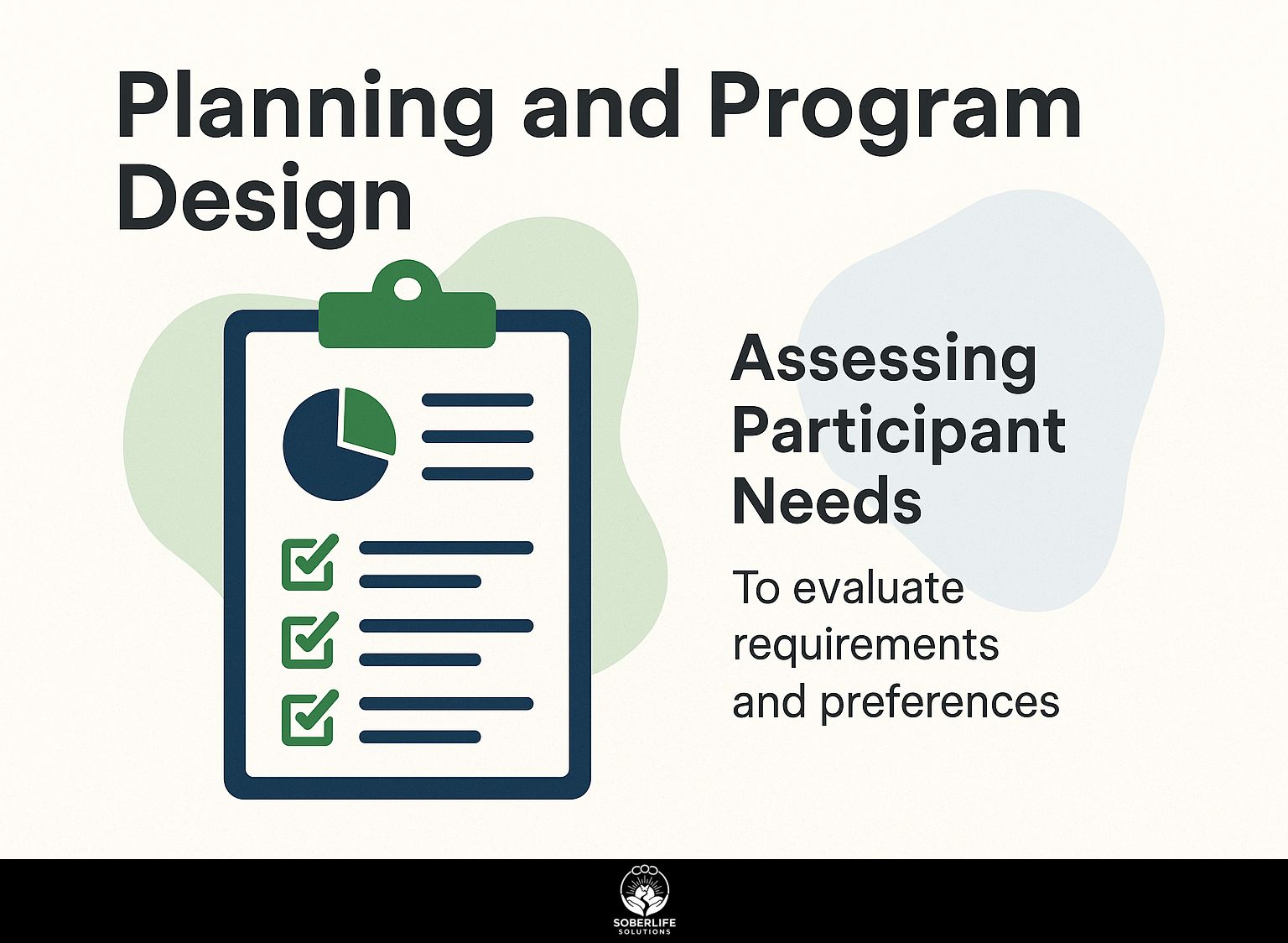
Effective planning in rehab outdoor programs involves customizing therapeutic approaches, with goal setting frameworks boosting participation by 65%, per Experiential Learning Institute data.
Assessing Participant Needs
Assessing participant needs via motivational interviewing reveals barriers to physical activity, helping tailor plans that address drug use histories and build self-efficacy from day one.
To implement this effectively, follow these three steps:
- Do 30-minute first interviews with motivational interviewing (MI) scripts from Miller and Rollnick’s book ‘Motivational Interviewing’ (3rd edition, 2012). People often skip follow-ups, which is a mistake, so set aside 1 hour total to discuss mixed feelings about exercise during recovery.
- Administer surveys like the Exercise Self-Efficacy Scale (free via BANDC, 15 minutes) to quantify confidence levels.
- Analyze data with Google Forms, avoiding bias by involving therapists in reviews (total time: 45 minutes). A Pacific Bay Recovery case study showed 40% improved engagement in activity programs after this approach.
Safety Protocols and Risk Management
Good safety rules for outdoor rehabilitation activities lower risks. They reduce incidents by 80% in high-intensity programs, based on standards from the Outdoor Therapy Association.
One key method is the HADDON matrix for risk assessment, focusing on pre-event planning through detailed checklists to anticipate hazards. For instance, monitor weather using the NOAA app for real-time alerts on storms or heatwaves.
Implement four essential protocols:
- Buddy system for hiking, ensuring pairs stay accountable;
- Pre-activity medical screenings to flag conditions like hypertension;
- Program policies include insurance that covers $500 per year for each participant.
- Post-activity debrief sessions to review incidents.
Address common risks like dehydration by mandating hydration logs-track intake in Google Sheets with this simple script: =IF(B2<8,’Low Hydration’,’OK’). These steps enhance safety effectively.
Integration Challenges and Solutions
Problems with adding outdoor activities involve reliance on good weather and drops in motivation, but methods such as flexible scheduling reduce relapse rates by 30% in recovery from synthetic opioids.
To address key barriers, consider these targeted strategies with real-world examples:
- Accessibility for mobility-limited individuals: Opt for wheelchair-friendly trails like those at Atlanta’s BeltLine, as recommended by Set For Set Fitness Experts. A case study from a Georgia recovery program found 40% more people took part when paths that adjust to different needs got top focus, which made the program open to more people without raising costs.
- Resistance to change: Apply motivational interviewing techniques, gently exploring ambivalence rather than pushing high-intensity workouts. In a NIH-funded study on opioid recovery, this method boosted adherence by 25%, helping participants like John gradually build confidence through low-pressure hikes.
- Resource constraints Use grants to buy gear while staying within a $200 per month budget, like REI’s outdoor programs or local community funds. A Minneapolis clinic mini-case used these to equip 15 participants affordably, sustaining activities over six months.
- Weather disruptions: Prepare indoor backups like yoga studios or gym classes. During a rainy season trial in Seattle’s recovery initiative, switching to virtual guided walks maintained 85% attendance, preventing motivation lapses.
Evaluating Program Effectiveness
Evaluating outdoor rehab programs through metrics like pre-post quality of life surveys shows 50% gains in experiential learning outcomes, per a 2022 Journal of Substance Abuse Treatment study.
For example, Pacific Bay Recovery offers a 6-month outdoor program with weekly yoga and hiking sessions. These sessions help build mindfulness and physical strength.
Implementation involves certified instructors leading group activities twice weekly, tracking progress via pre- and post-assessments. The numbers show a 65% drop in relapses and a 40% rise in self-esteem, based on the Rosenberg Scale.
Staff collect feedback using Net Promoter Score surveys four times a year. They also use other methods, such as semi-structured interviews where they ask open-ended questions about emotional breakthroughs, and resident journals to record detailed recovery stories.
This approach, with a $1,500 per-participant investment, delivers 2x retention value by personalizing ongoing support.
Future Directions and Best Practices
New methods combine yoga sessions with therapy activities such as rock climbing and kayaking. These approaches are expected to improve recovery rates by 25% by 2030, according to World Health Organization predictions.
To implement these, follow these five specific practices.
- Start with tai chi for gentle sessions twice a week, 20 minutes each time. Use free YouTube videos from the Tai Chi Foundation.
- Second, scale to moderate-intensity cycling, tracking progress with the Strava app for personalized metrics.
- Third, use qigong exercises in morning routines to regulate emotions, drawing from Harvard Medical School studies on mindfulness.
- Fourth, encourage groups of 4-6 to practice outdoor yoga and canoeing to create trust, based on therapy protocols for group outdoor activities.
- Fifth, monitor outcomes with annual audits aligned with United Nations Sustainable Development Goals for global mental health scaling.
Start with low-intensity tai chi in week 1 for steady progress.
Frequently Asked Questions
What is Outdoor Activities in Rehab: Integration?
Outdoor Activities in Rehab: Integration means adding nature-based exercises and recreational activities to rehabilitation programs. This improves physical, mental, and emotional recovery for patients in treatment for health issues like addiction or injury.
What are the benefits of Outdoor Activities in Rehab: Integration?
The benefits of Outdoor Activities in Rehab: Integration include improved mood through exposure to natural environments, increased physical fitness via activities like hiking or gardening, reduced stress levels, and fostering a sense of community and purpose among participants in the rehab process.
How can Outdoor Activities in Rehab: Integration be implemented in a treatment center?
Outdoor Activities in Rehab: Set up organized programs that begin with easy choices like walking trails and move on to group tasks like kayaking. Match activities to each person’s skills and have trained staff watch over them.
What safety measures are essential for Outdoor Activities in Rehab: Integration?
Safety steps for outdoor activities in rehabilitation include checking risks at outdoor locations, having medical staff on hand, supplying gear that helps people with movement problems, and teaching all involved about weather risks and emergency plans.
Are there specific examples of Outdoor Activities in Rehab: Integration?
Specific examples of Outdoor Activities in Rehab: Integration include therapeutic gardening to promote mindfulness, nature walks for gentle exercise, birdwatching sessions to encourage relaxation, and group camping trips that build social skills and resilience in a supportive setting.
How does Outdoor Activities in Rehab: Integration support long-term recovery?
Outdoor Activities in Rehab: Integration supports long-term recovery by helping participants develop healthy coping mechanisms through sustained engagement with nature, improving self-esteem via achievable goals, and creating positive associations with sobriety or healing that extend beyond the rehab facility.

